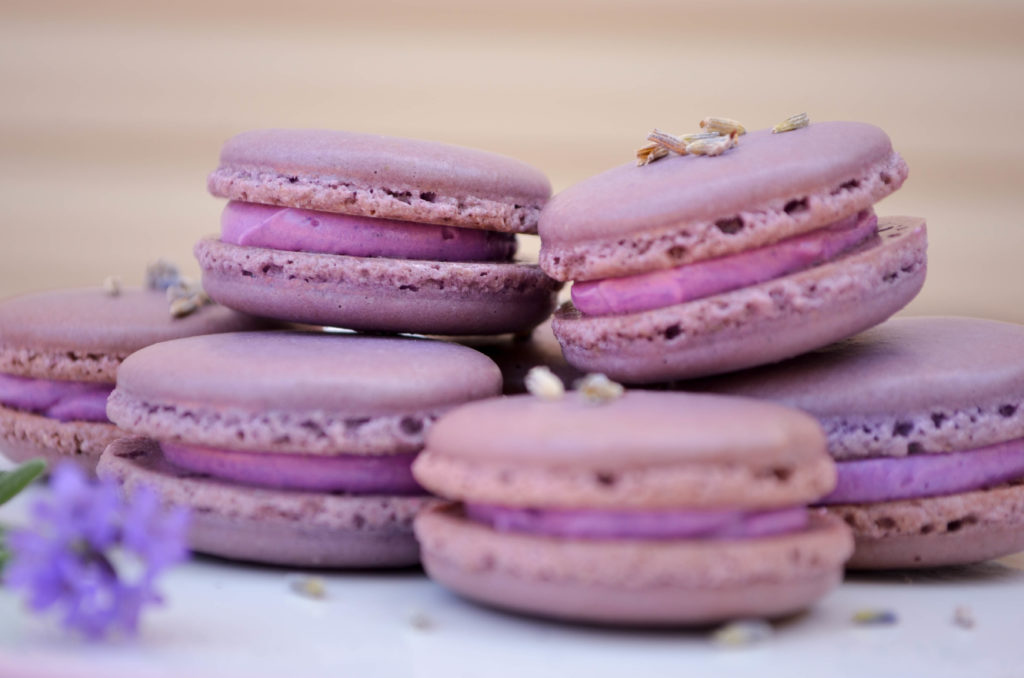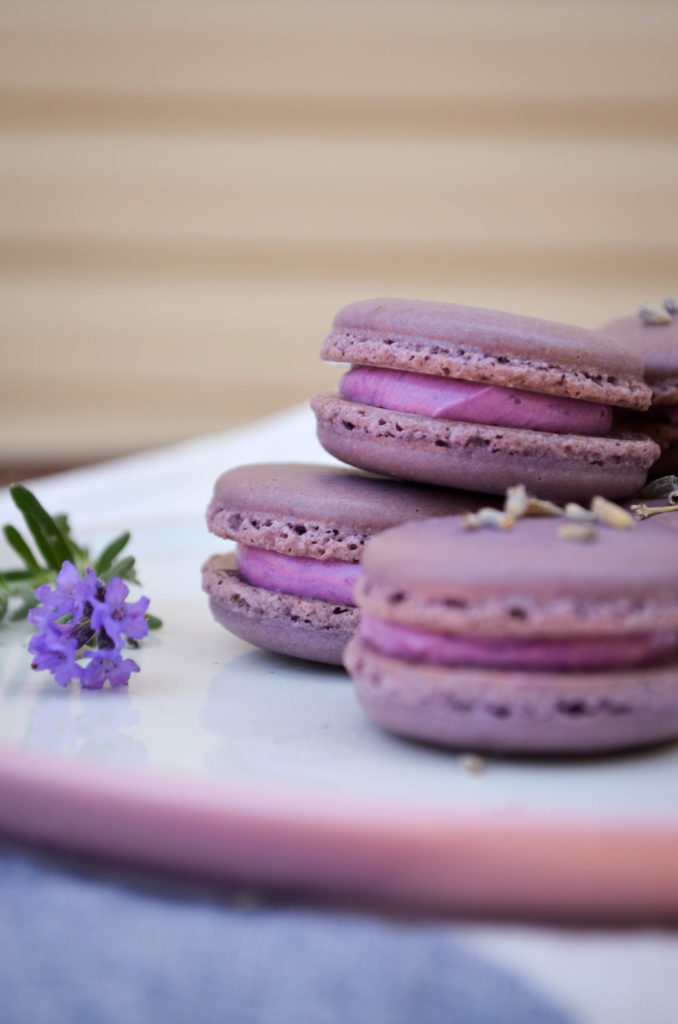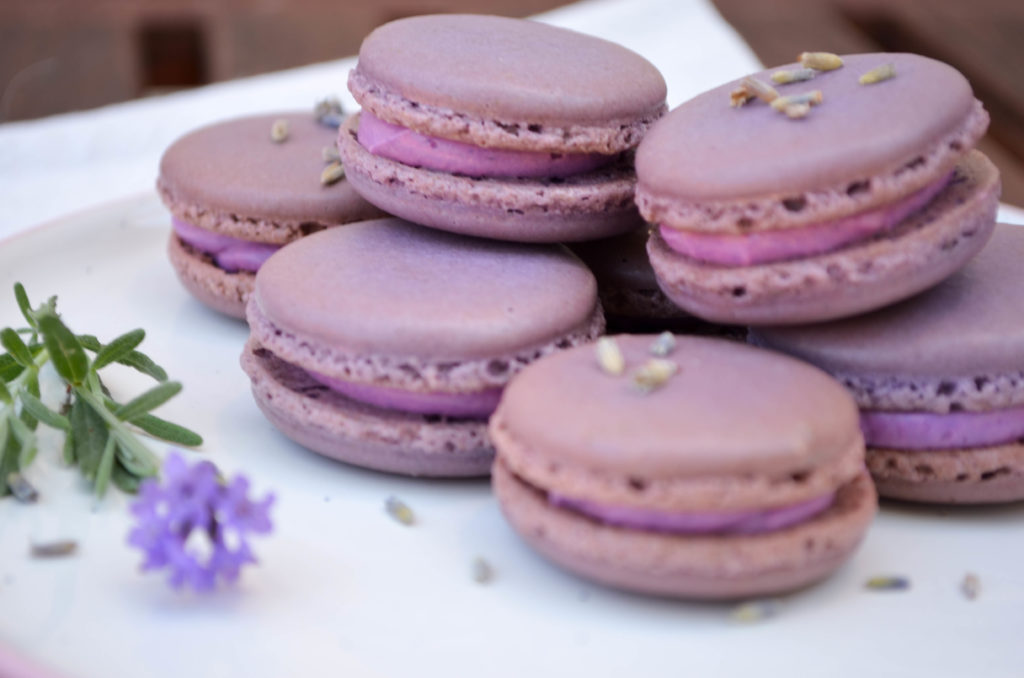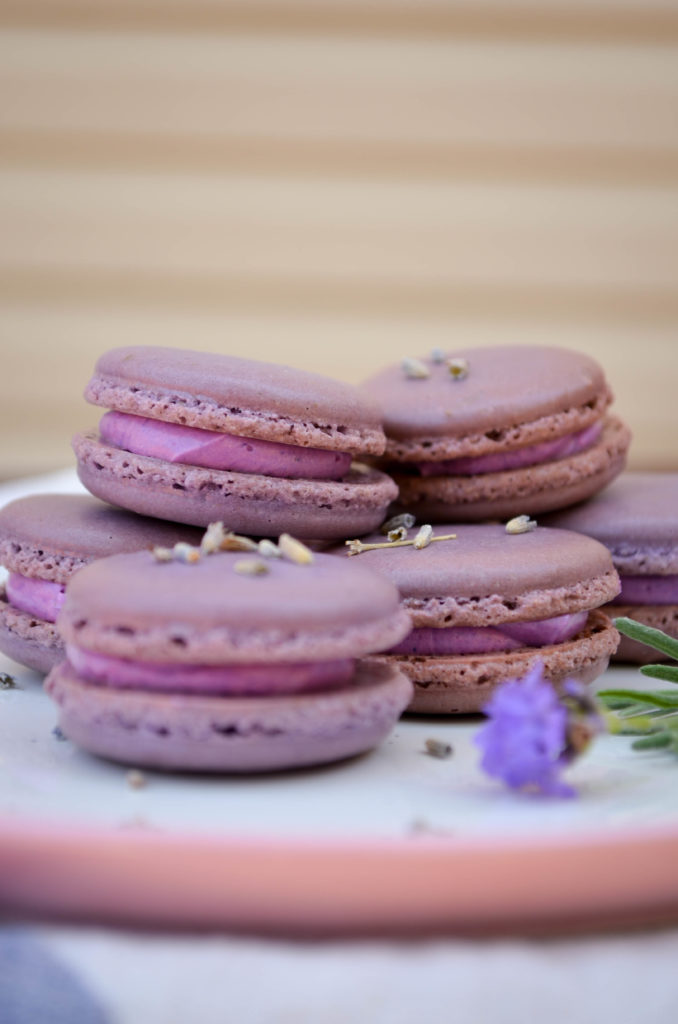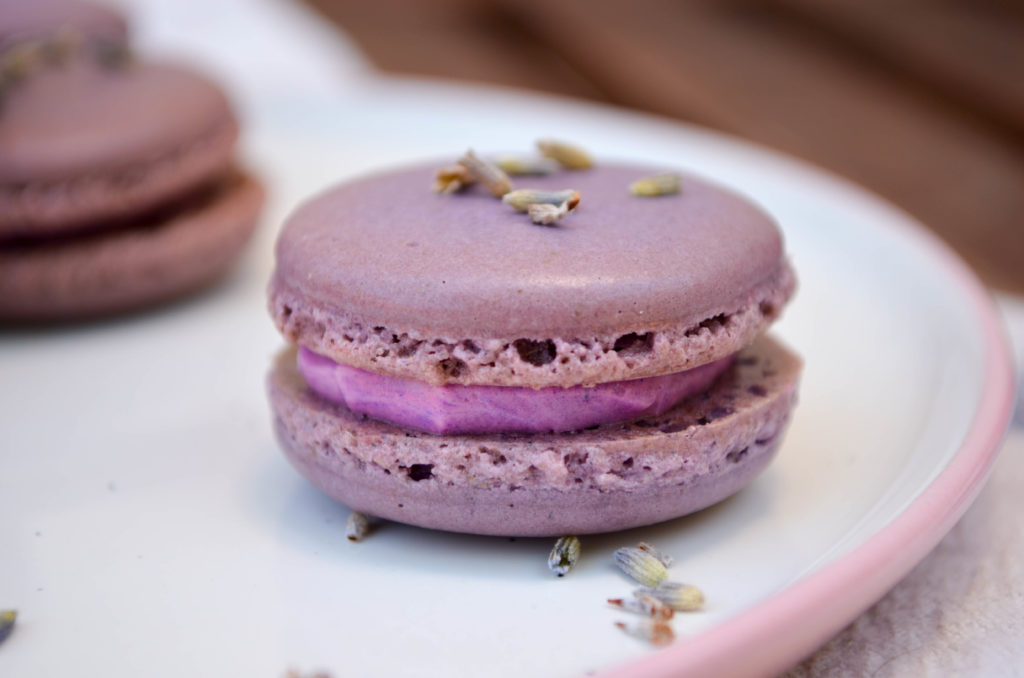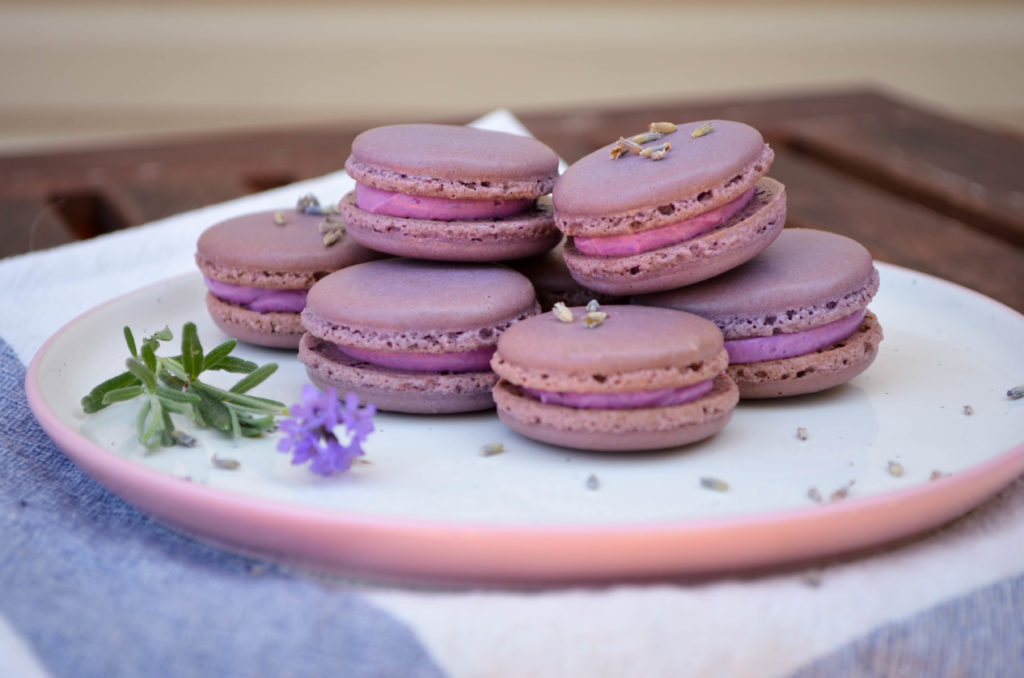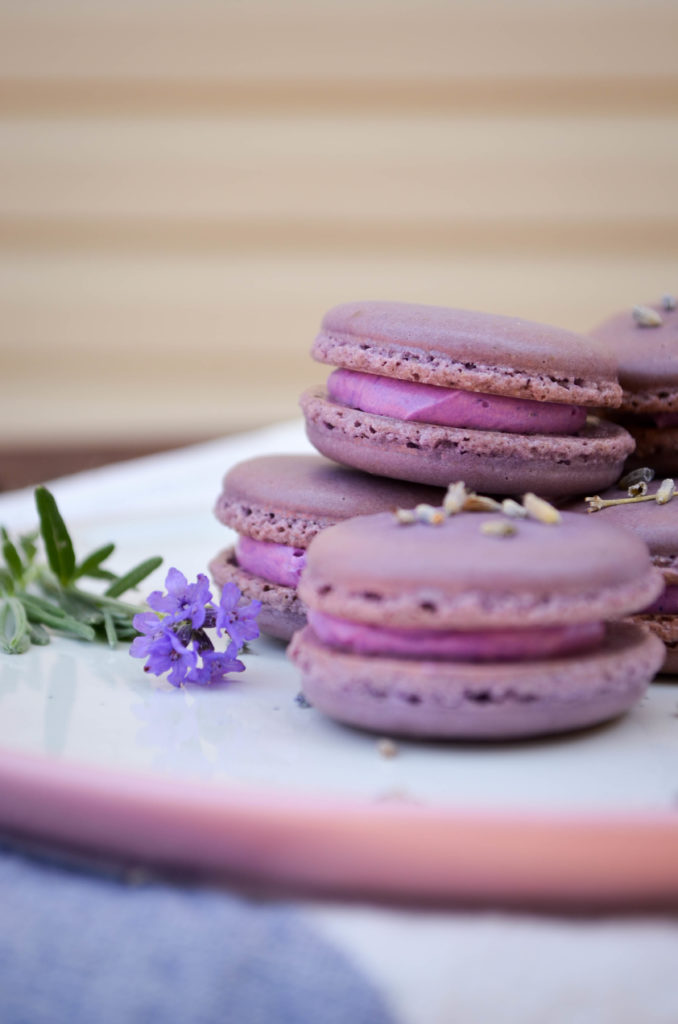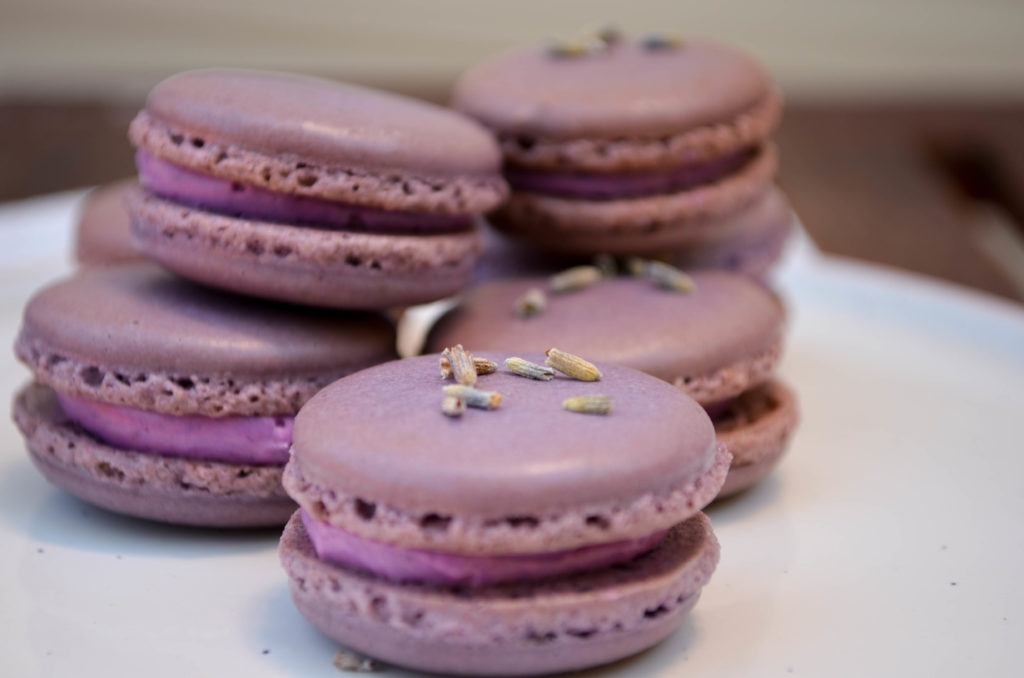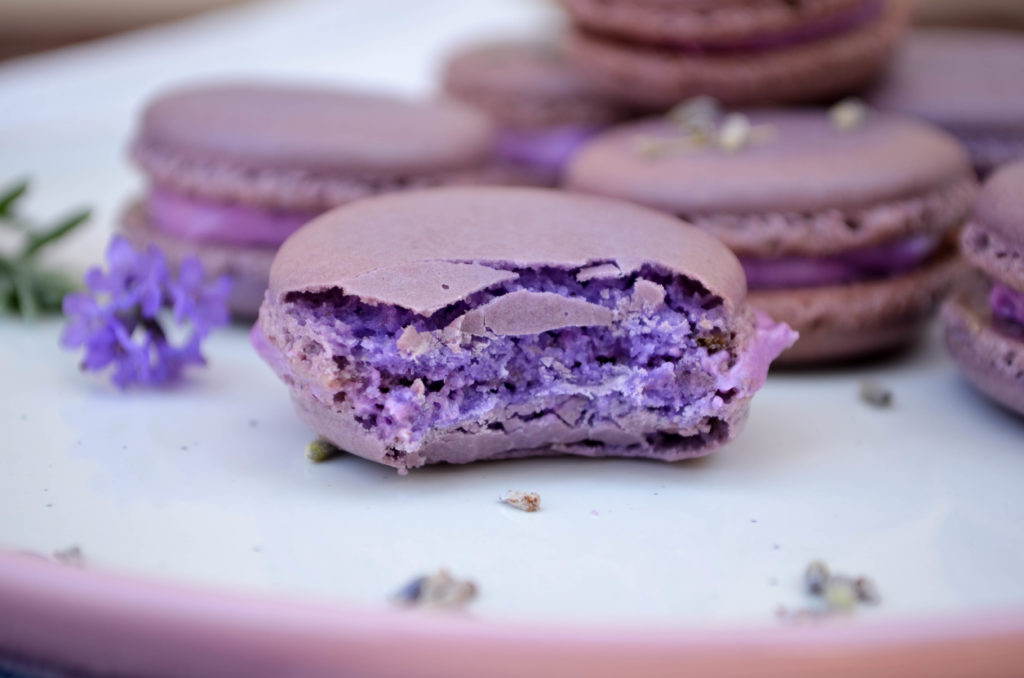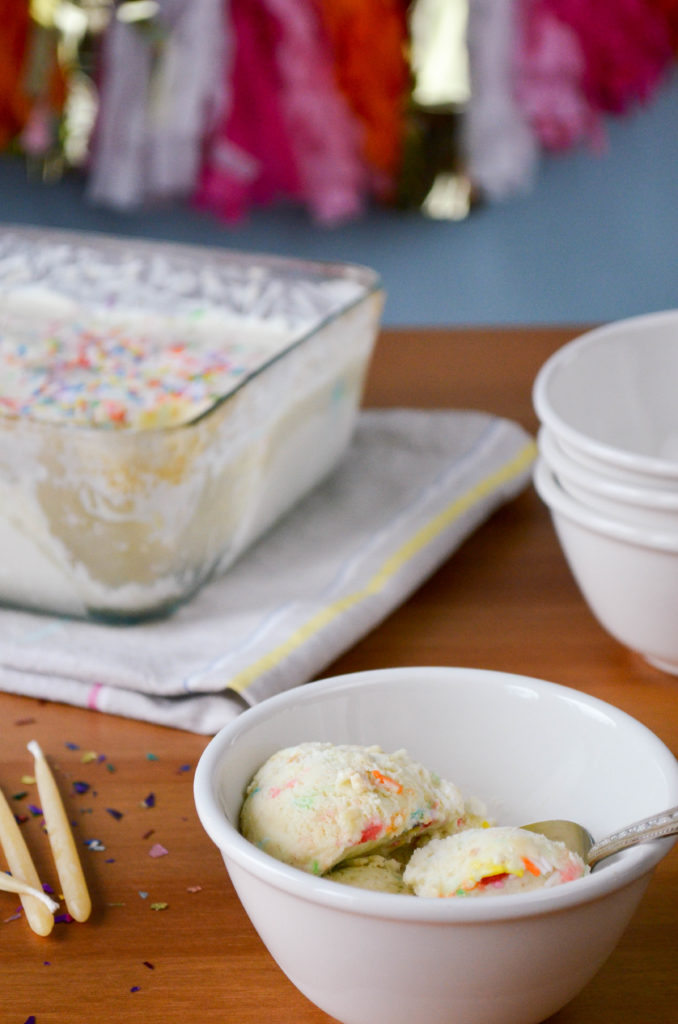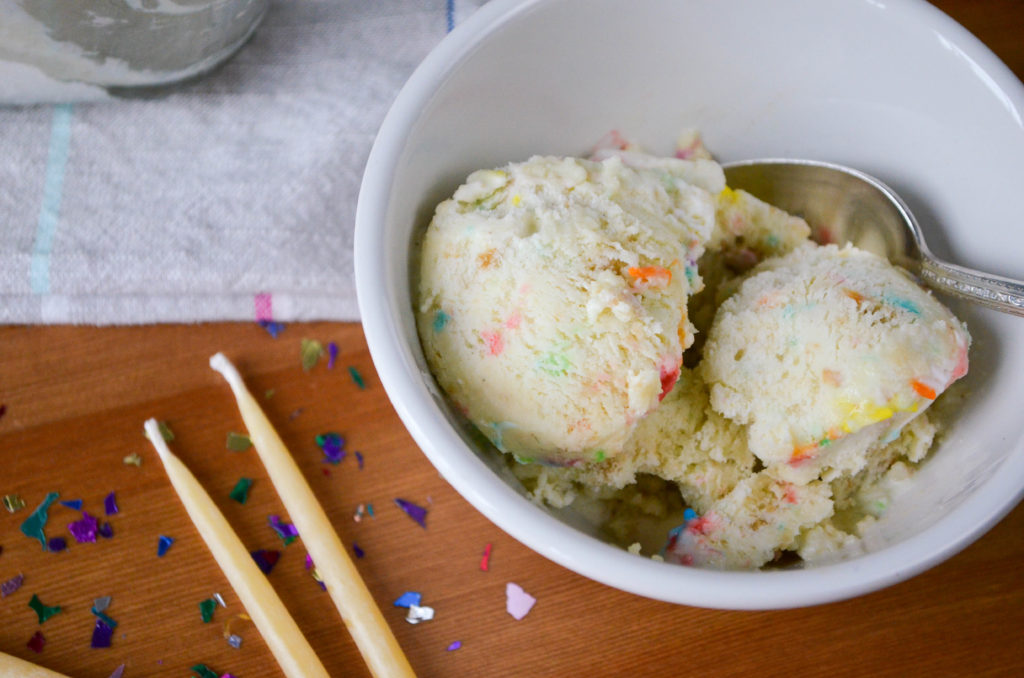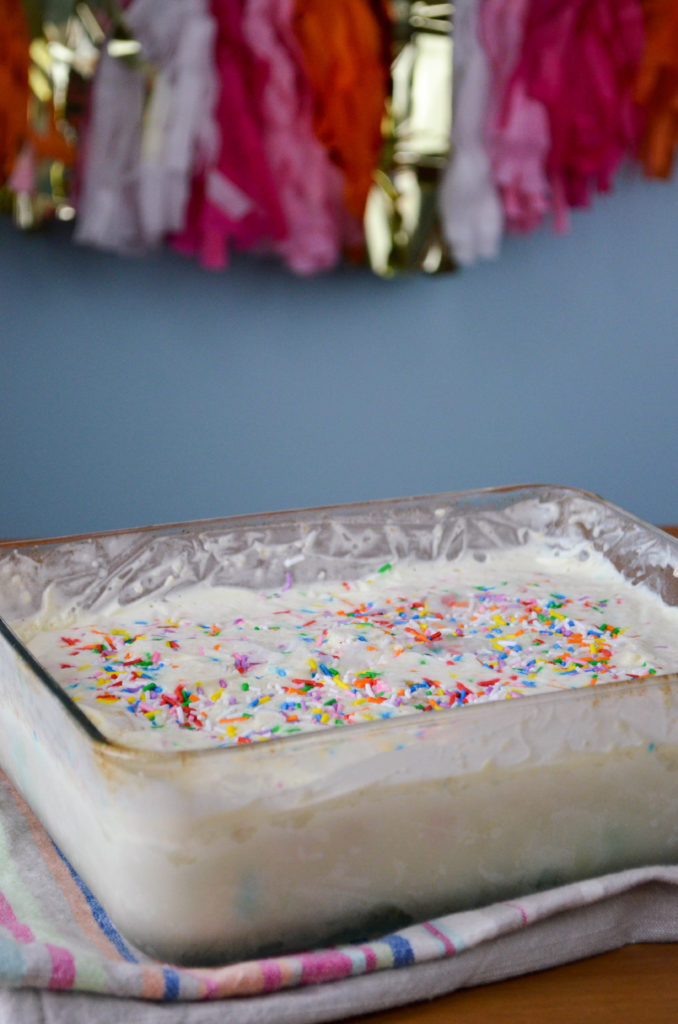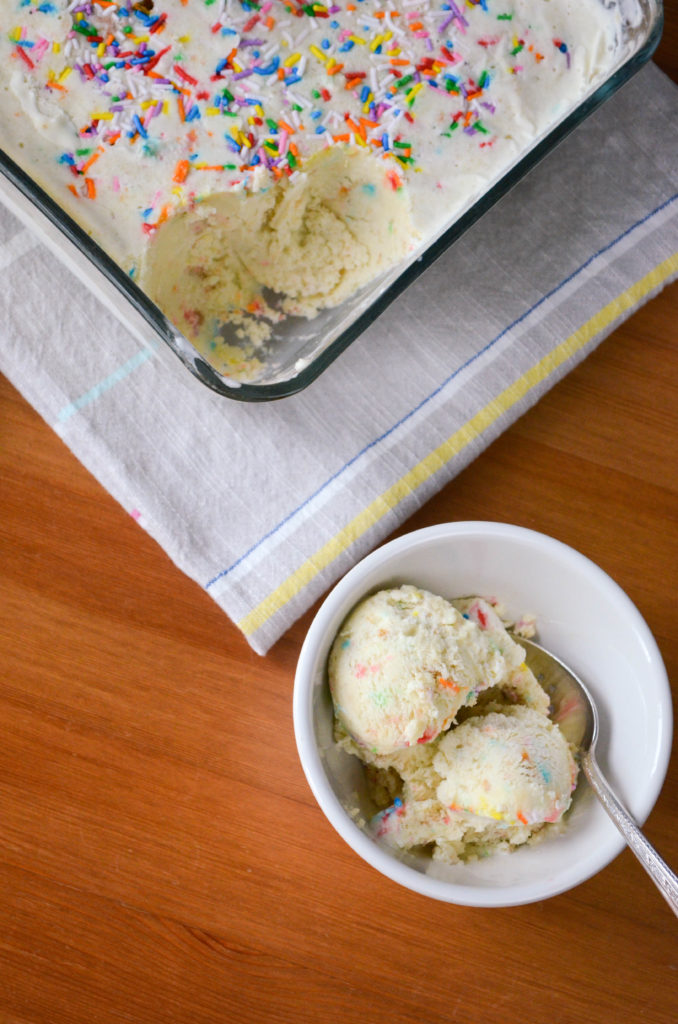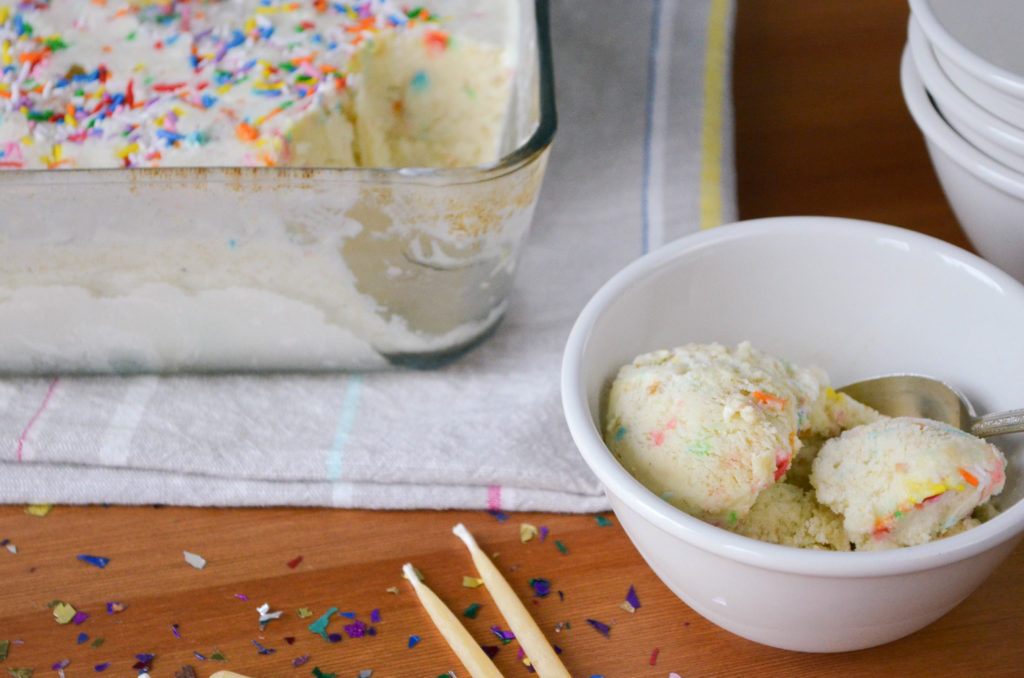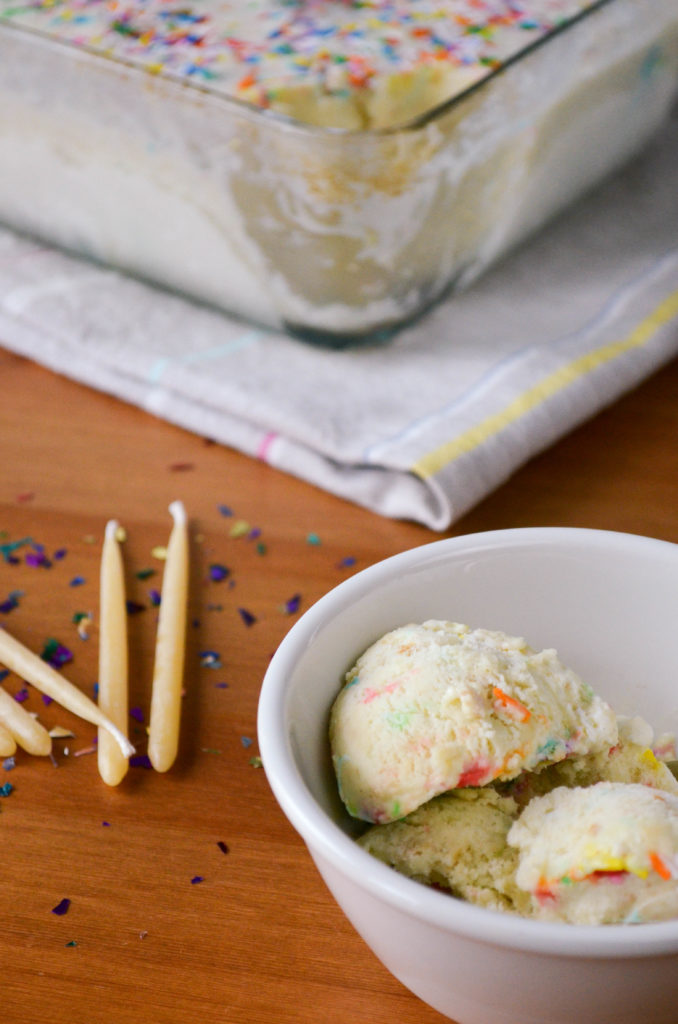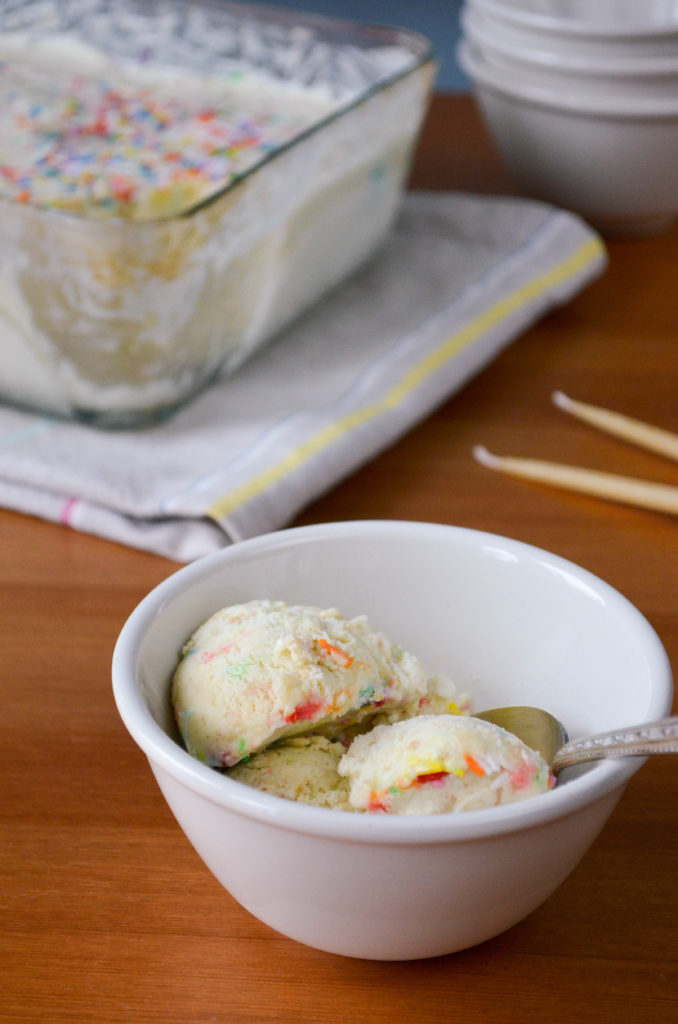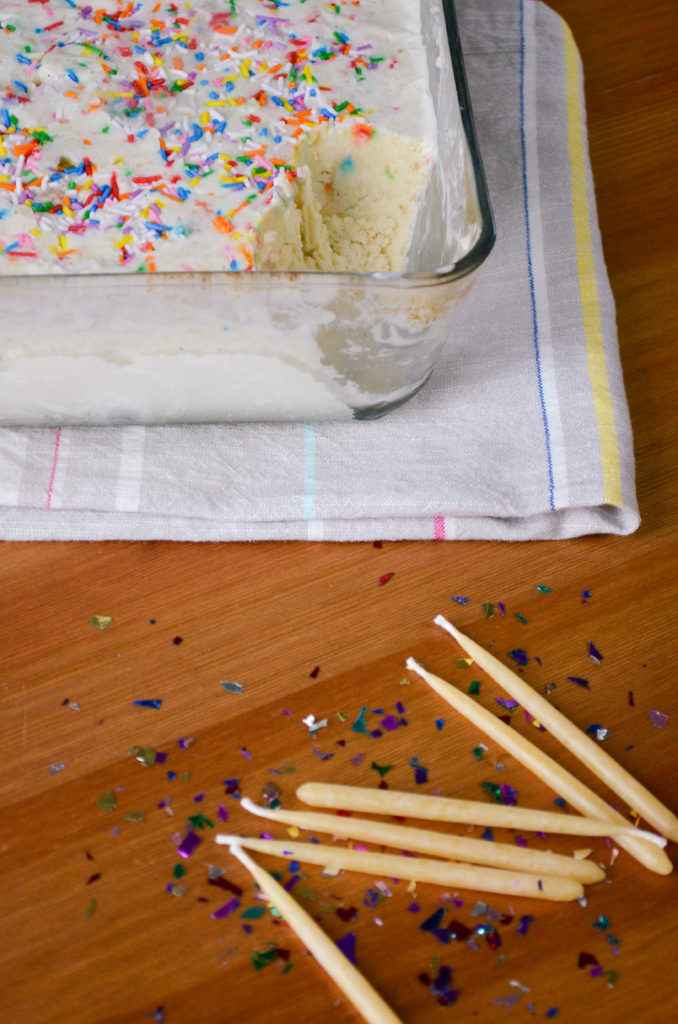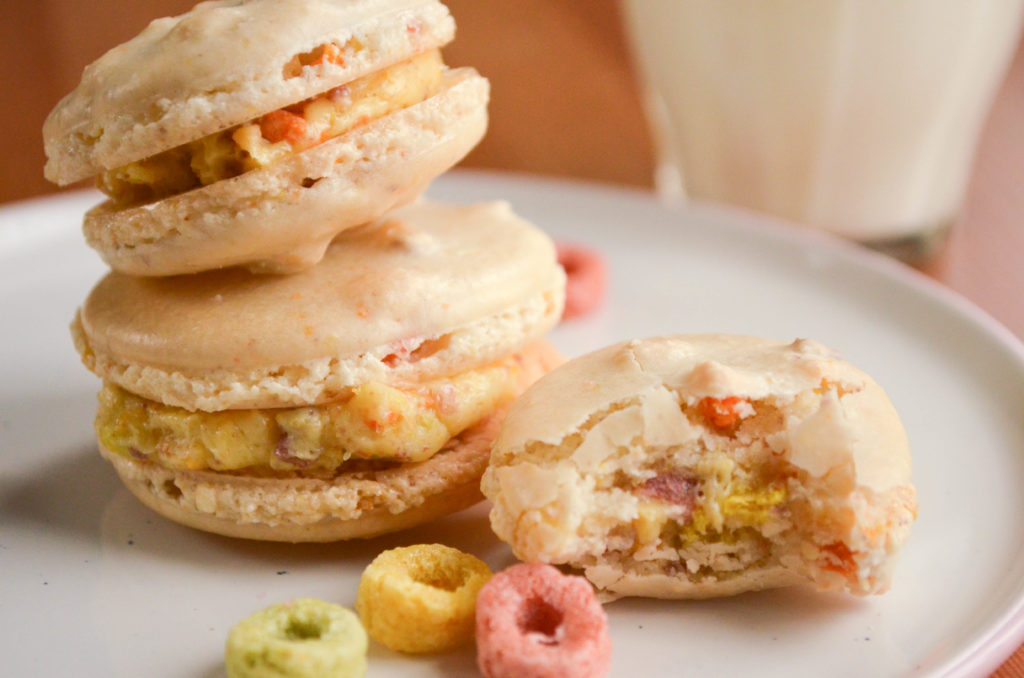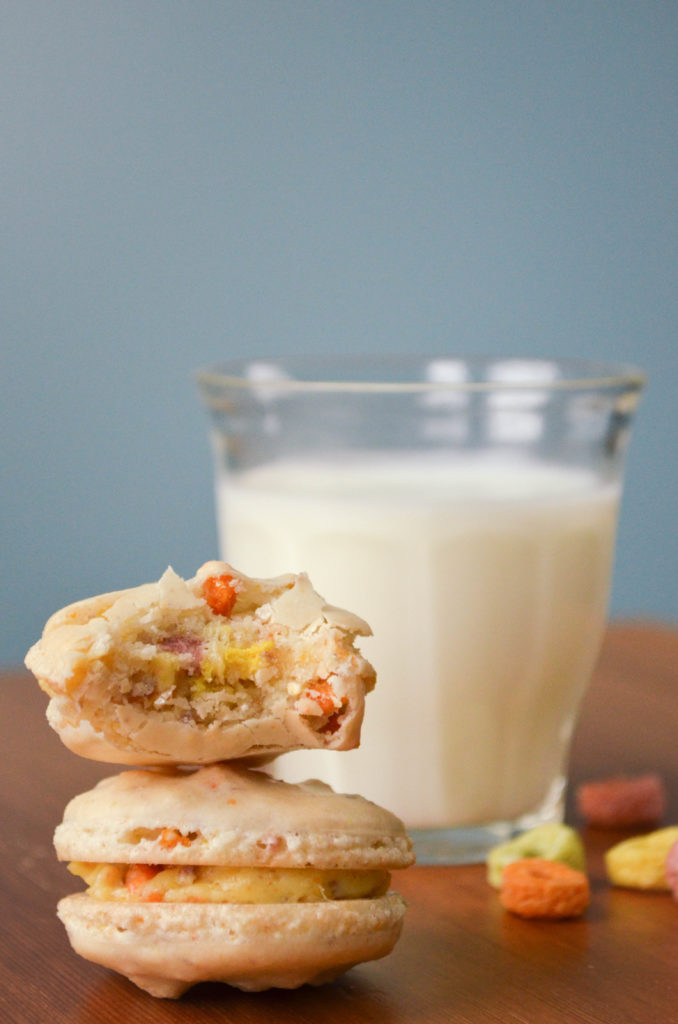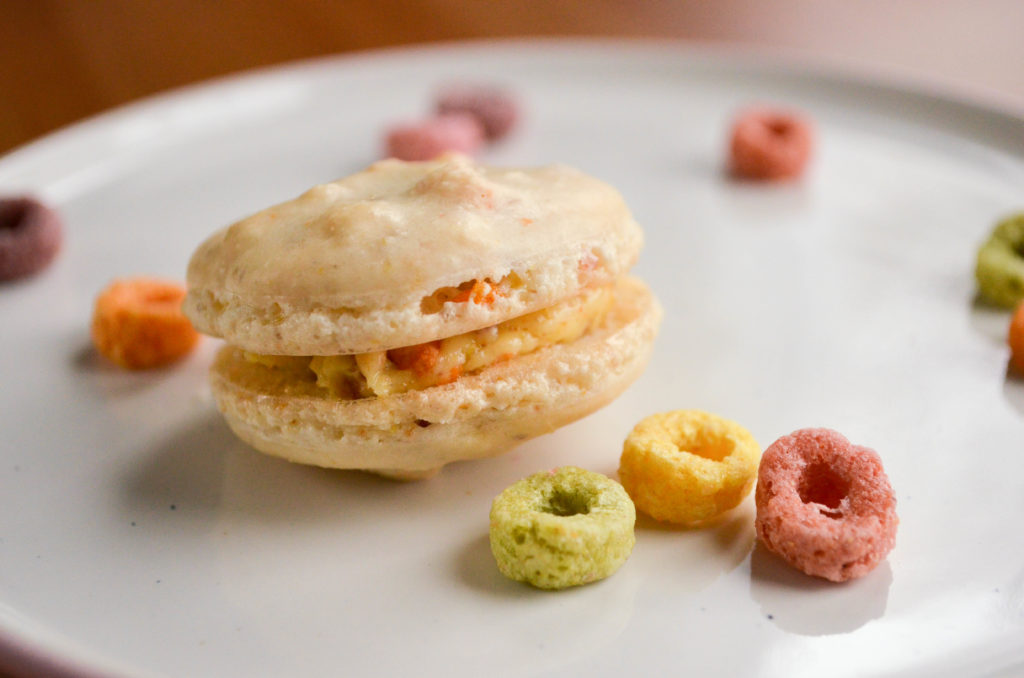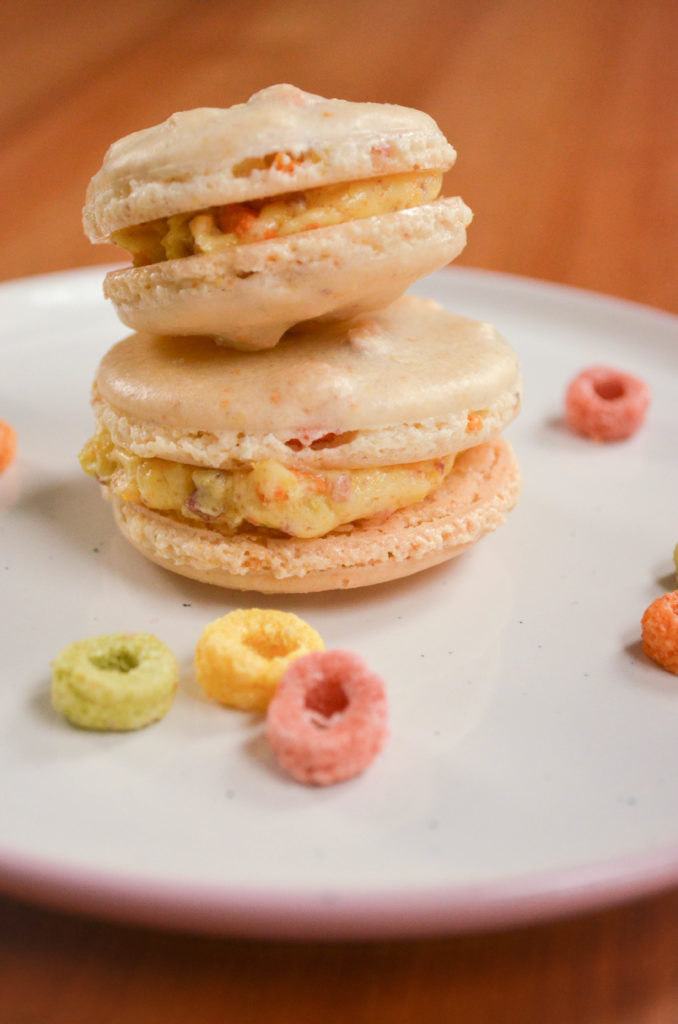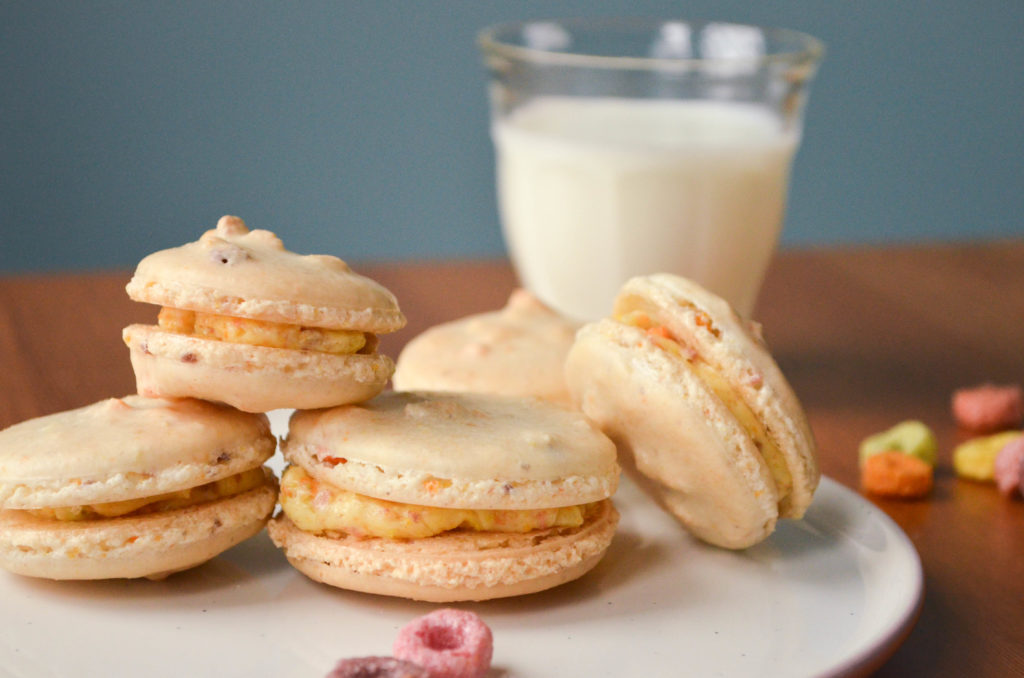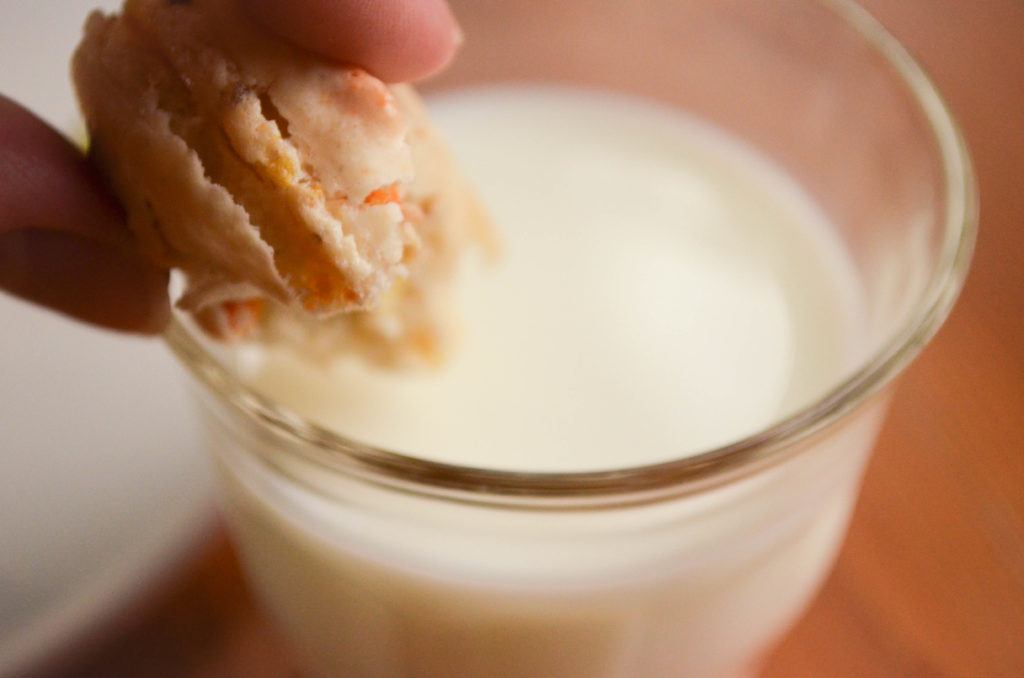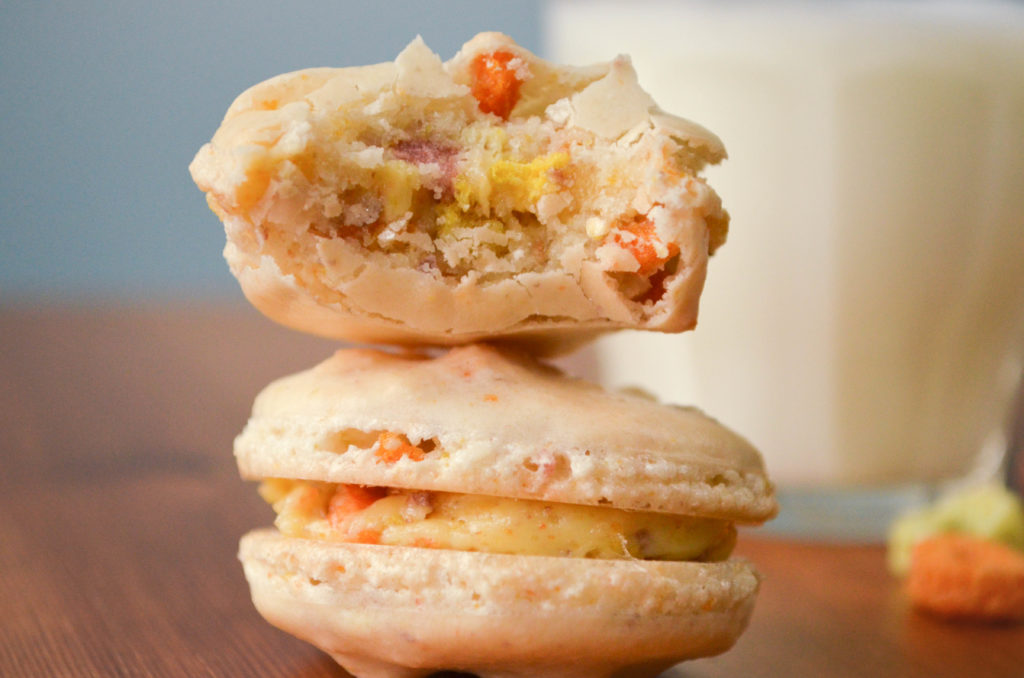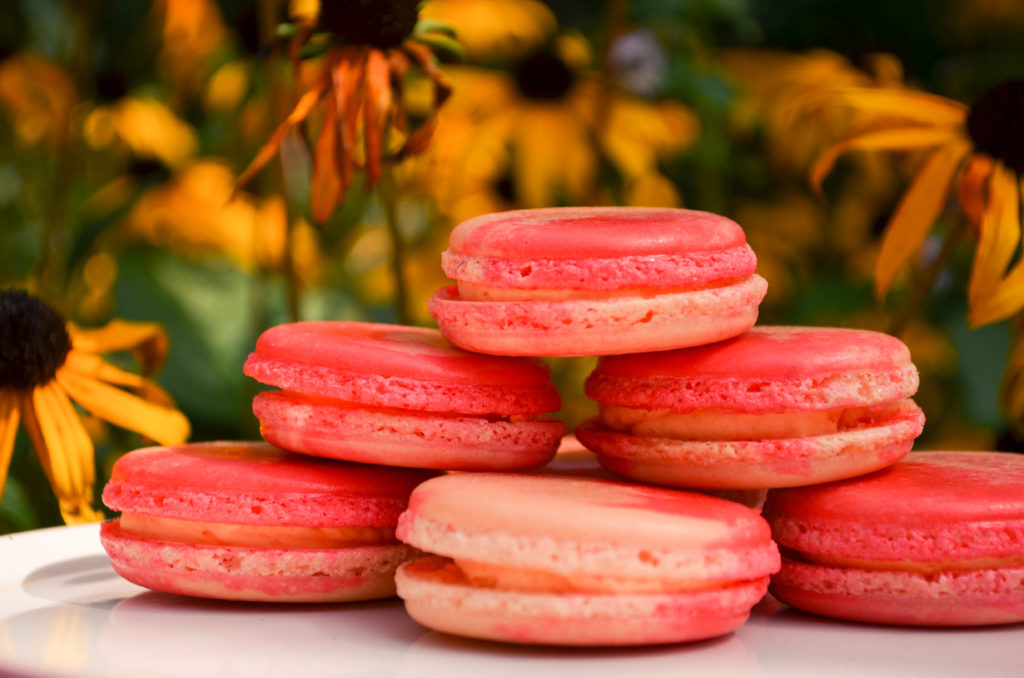
Here in the Niagara Region, late summer is peach season. I never really liked peaches until I moved here, now I can’t get enough of them once August rolls around. You can’t take a drive through the country without observing signs for fresh, local peaches or walk around residential streets without noticing all the trees brimming with plump, blushing peaches. It’s not hard to see what inspired me to make this month’s macaron flavour a sweet and subtle peaches & cream.
Still using the dryer version of my recipe for baking in the summer humidity, today I paired a classic vanilla shell with a peach buttercream and had some fun with two-tone batter. See my recipe and colouring instructions below!
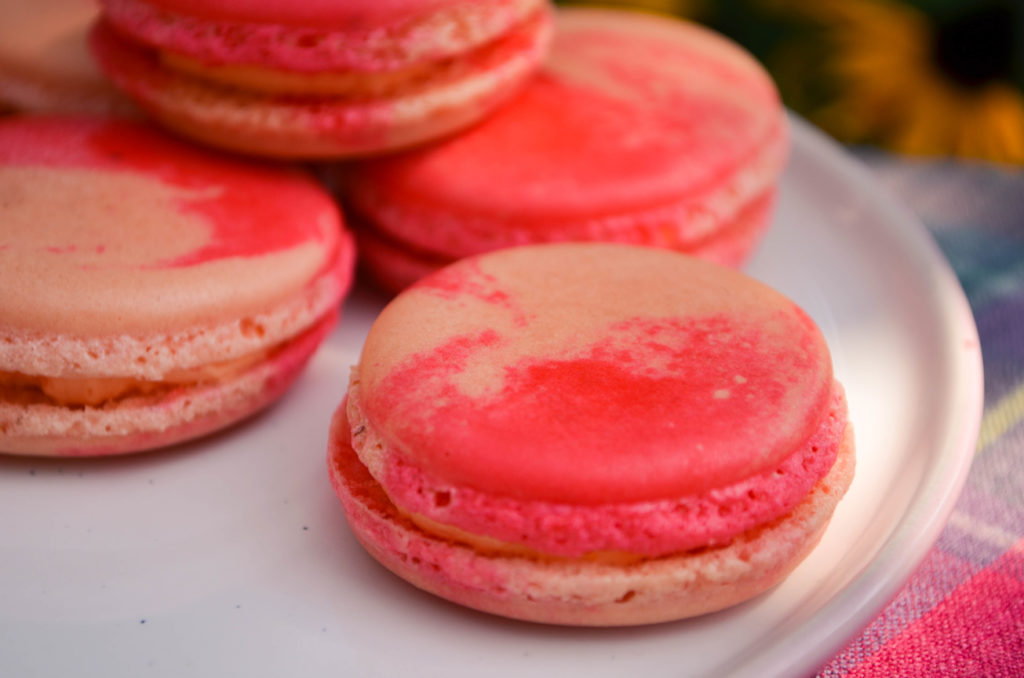
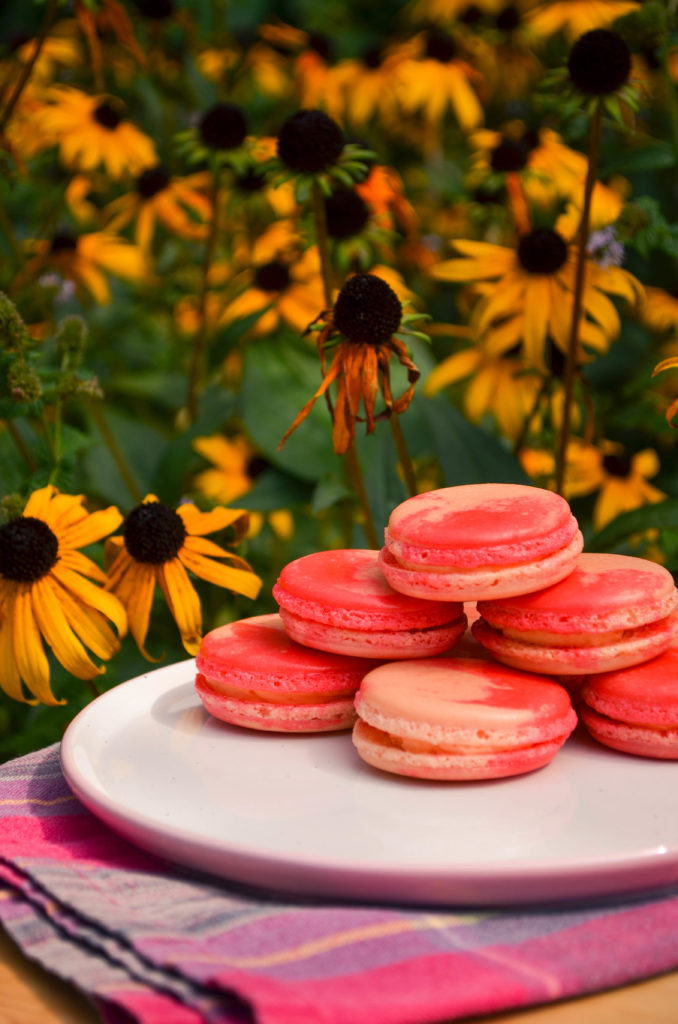
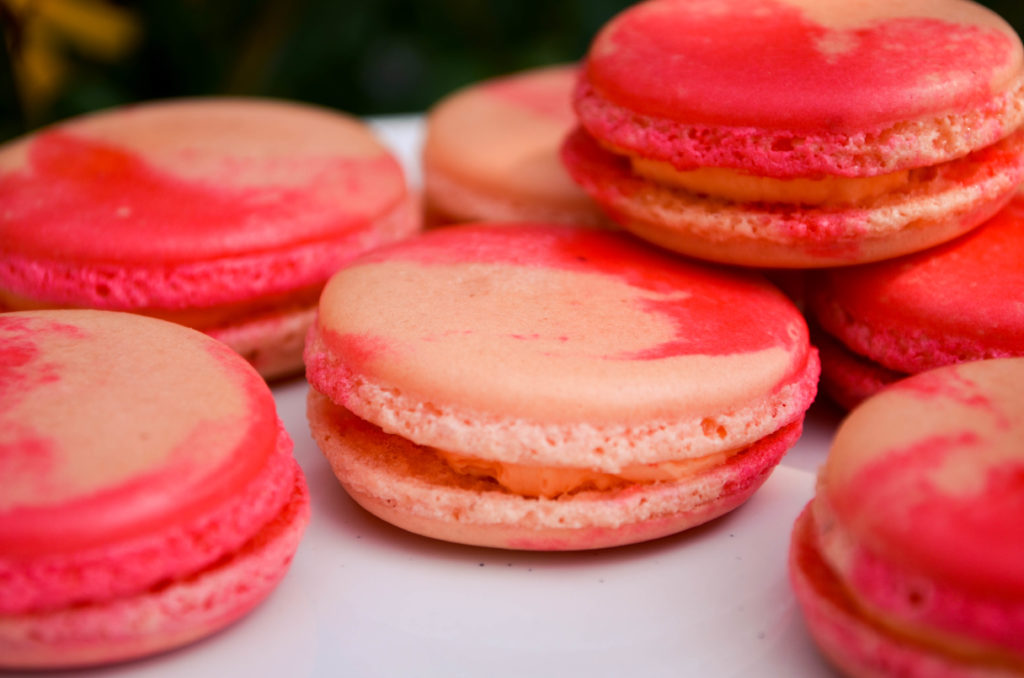
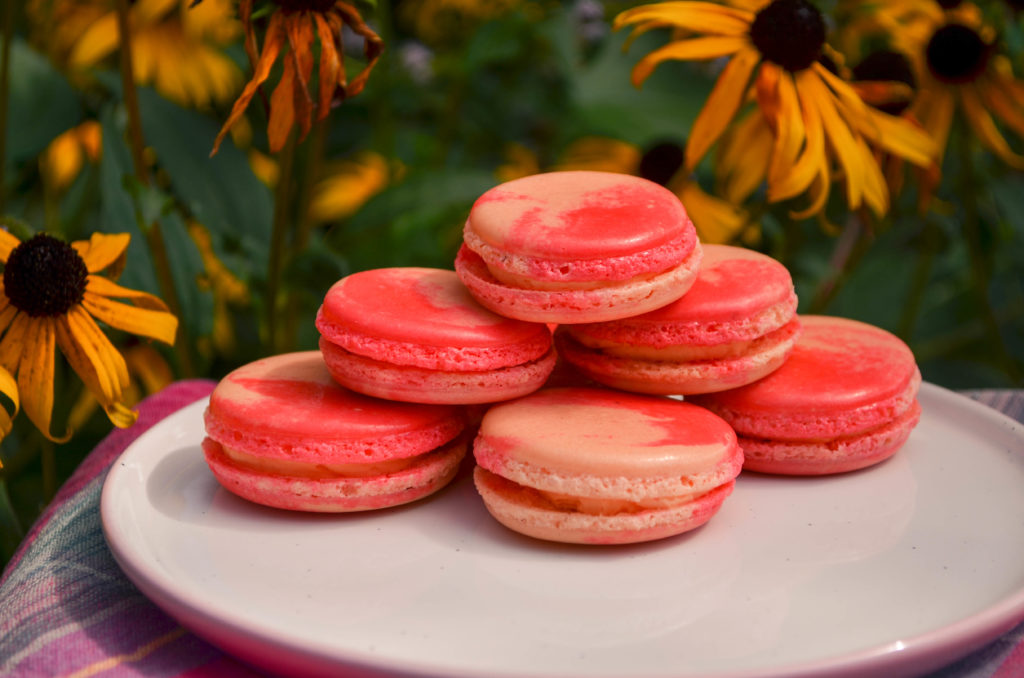
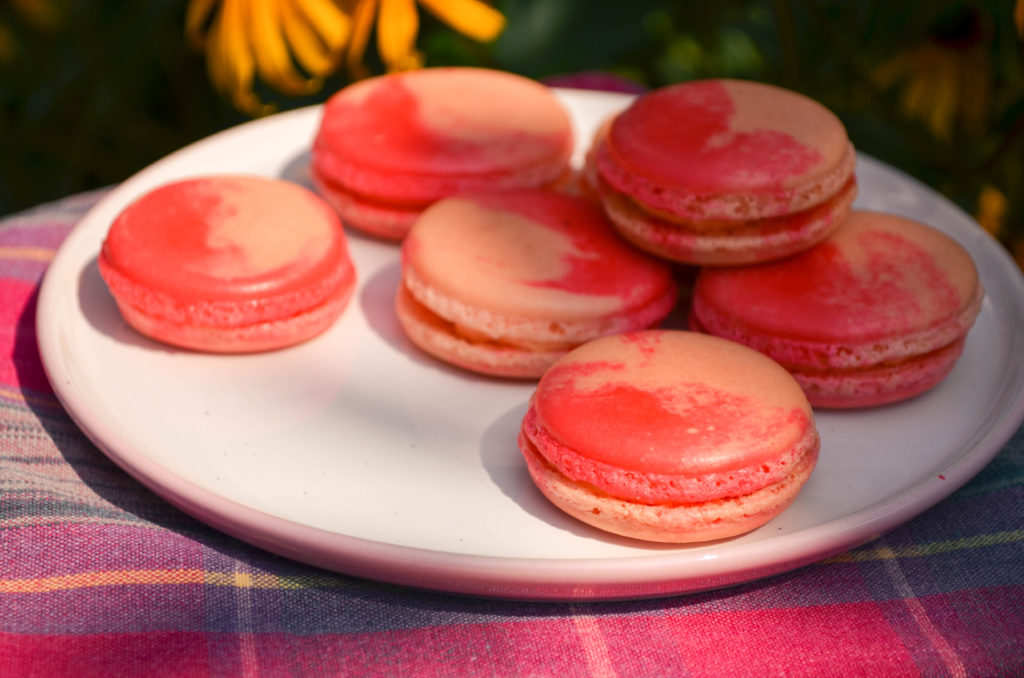
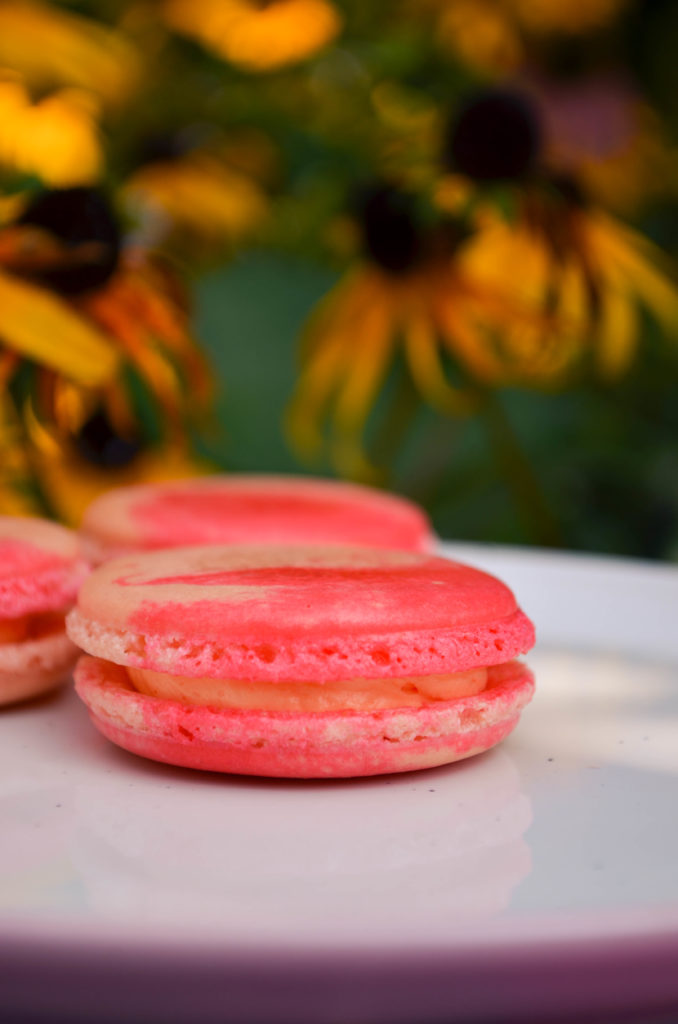
Ingredients
for the macaron shells
- ¾ cup ground almonds (as finely ground as you can find)
- 1 cup icing sugar
- 2 large egg whites, at room temperature
- 3 tbsp + 1 tsp sugar
- 1 tsp vanilla
- peach and red gel food colouring
for the buttercream
- 7 tbsp unsalted butter, softened
- 1 egg, at room temperature
- 3 tbsp water
- 3 tbsp sugar
- 5 tbsp peach jam
- peach gel food colouring
Method
for the macaron shells
- Prepare your parchment sheets by drawing 1″ circles, ½” apart across the entire sheet (or using silicon baking mats with the circles already printed on them) and placing them on a large flat surface suitable for drying your batter, like a dining table. You will need 2-3 half sheet pan size pieces.
- Sift ground almonds and icing sugar together, twice. Set aside.
- In a large stainless steel mixing bowl, beat egg whites with a hand or stand mixer on high speed until you have a foam with no liquid remaining.
- Slowly add the sugar while continuing to beat the egg whites. Beat on high speed until the egg whites reach stiff peaks. You’ve made meringue!
- Add vanilla and gently beat in.
- Fold your almond and icing sugar mixture into the meringue in two parts.
- Here’s the part that takes practice: it’s time for the macaronnage! With a spatula, spread the batter, with some force, against the side of the bowl. Then scoop it up by running the spatula along the side of the bowl again and try to flip it all over and sort-of lightly smack it back into the bottom of the bowl. Gather the batter up again and repeat 10 times. It takes some time to figure out the best way to do this, don’t be afraid to play around with it. When doing the macaronnage correctly, repeating more than 20 times can result in oily, blotchy macarons, but I’ve found that doing it incorrectly doesn’t count towards this limit. If you are doing it right, the batter will take on a noticeable and somewhat sudden change in consistency, this means you are about half-way to that limit. When finished, the batter should be thickened and drip slowly from the spatula. You will have to pipe it onto your baking sheets/mats and it won’t work if the batter is too runny. This is the technique that defines macarons, this is what makes mastery of them impressive.
- Before completing the macaronnage, divide batter into about half and place in two bowls, with a little more in one bowl. Colour the larger portion peach and the smaller red. Don’t be afraid to perfect your colours, we stopped the macaronnage short to give you more mixing time now.
- For perfectly round macarons, use a large, 0.4″ plain tip with a pastry bag, or do it the lazy way and cut a corner off a zip top bag for mostly round macarons. Twist (or don’t yet cut) the bag at the tip and place it, tip side down, in a tall glass. Fill with your batter, placing peach coloured batter down one side and red down the other, and twist, close or clip the other end to help keep the messy batter moving in the right direction. Pipe the batter into the centre of the circles on your sheets/mats and stop before reaching the edges as the batter will spread out a bit.
- Once finished piping, carefully pick the sheets/mats up and drop them back on to the table from a height of a couple of inches. The theory is that this helps the cookies keep their round shape and form the little bubbles around the bottom (the pied) when you put them in the oven.
- Leave the cookies on the table, uncovered, for 15-30 minutes to dry (or more on a humid day). This is a good time to preheat your oven to 350°F. You will know the macarons are dry when they look smooth and are no longer sticky to the touch.
- Place an oven rack in the centre of your oven. Place a sheet of macarons on two stacked sheet pans (this will stop the bottoms from getting too hot, resulting in cracked macarons) and bake for about 15 minutes. Rotate the pan half way through baking. (Tip: At this point, if you want to try to keep your cookies light in colour, place a second oven rack directly below the first and move your cookies down to it, then place a third sheet pan above the cookies on the higher rack to protect them from the heat above.) It can be hard to tell when the macaron are done. I pull them out when the kitchen smells sweet and the cookies look crisp, have just started to brown, and don’t look blotchy in the middle.
- As soon as the parchment sheet/baking mat is cool enough to handle, take it out of the pan with all the cookies on top and place it on a cooling rack. The macarons will be too sticky to remove from the sheet/mat now; once cooled, they should peel off easily. I usually wait a few minutes for the pans to cool a bit and for the oven to come back to a steady temperature before moving the next sheet to the pans and baking the next round.
for the buttercream
- Make sure the butter is soft enough for you to press your finger into. On a summer day, room temperature usually does the trick. Cream the butter in a medium sized bowl. Set aside.
- Break the egg into a large heat-resistant mixing bowl and beat lightly with a hand mixer. Set aside.
- Add water and sugar to a small saucepan and place over medium-low heat. Bring to a simmer and stir until thick and syrupy, about 7 minutes. You’ve made simple syrup!
- Slowly pour your simple syrup into the beaten egg while beating with a hand mixer on as high a speed as you can without flinging syrup everywhere, remember it is hot and sticky. Once all the syrup is in, beat the mixture on high speed, slowly reducing speed until it is light in colour, thick, and the bowl is no longer hot.
- Add the butter to this mixture in two or three parts and beat on medium speed until fully incorporated and creamy. If you are like me, the buttercream will split now. If continuing to beat doesn’t bring it back together, it’s probably too warm. Pop it in the fridge for a few minutes and try beating it again. Continue doing this until it comes together.
- Add the peach jam and lightly beat in.
- Add the gel food colouring and whisk through.
Once everything has cooled, snip the corner off your bag of buttercream and pipe it onto half of your shells. Then place another similarly sized shell on top and gently press them together.
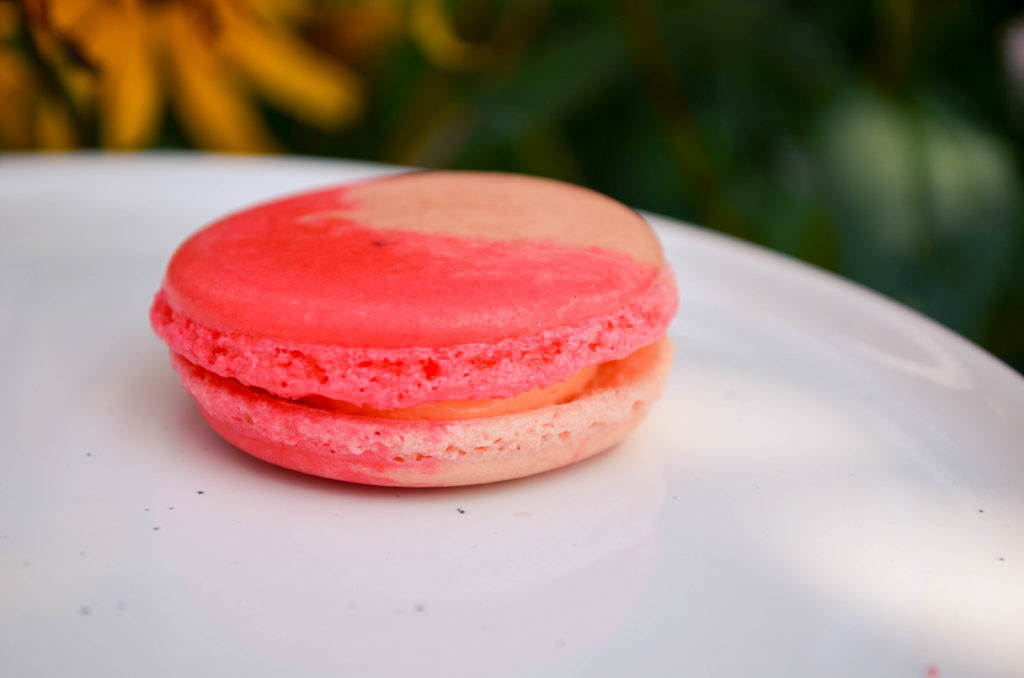
All photos be me.

